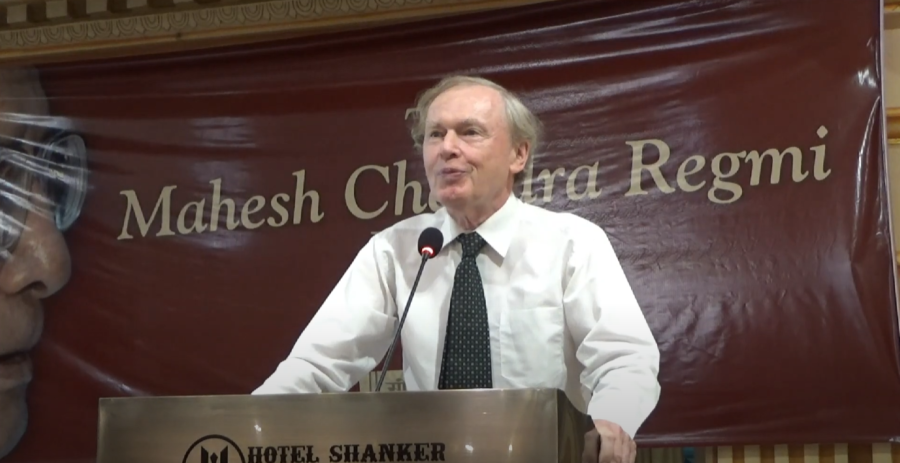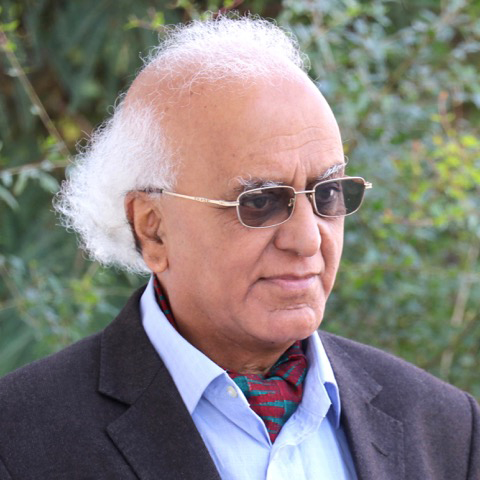Columns
Nepal like a ‘yam’ between two rocks
Recognising history’s multidimensional aspects is the reality that nations are grappling with today.
Abhi Subedi
British Nepali historian John Whelpton, who has researched Nepali history and politics, evoked a subject of Nepali historical discussions at the Mahesh Chandra Regmi Lecture 2024 on September 11. This was the 17th in the series started by Social Science Baha in 2003 with the lecture of the well-known Nepali scholar Harka Gurung.
Nepali historian and research director of Martin Chautari, Pratyoush Onta, brought this subject to the audience’s attention. He presented the outline of Whelpton's works by bringing forth his scholarship and his easy and human approach, as seen in his oeuvre and also in the technical features of them. According to political scientist Hari Sharma, Whelpton's works on Nepali history and society are an act of love that is performed sans huge foreign funds, sans institutional connections and sans any noise of the familiar order. Whelpton’s scholarship and studies on Nepal sound more like a literary writer's passion for people and places.
People of different interests and expertise attended the talk series, including senior historian Triratna Manandhar, Kanak Dixit, and the young generation. The lecture, slightly overstretched, went well for several reasons. First, the treatment of the subject by this senior historian, who, according to Onta, entirely created the character of his scholarship from his close connection with Nepal, was interesting.
Second, Whelpton evoked a matter that is most bandied about by Nepali historians, politicians and common people, which is the famous remark made by the founder of modern Nepal, the king of the house of Gorkha, Prithvi Narayan Shah (1723-75). Shah said he discovered that Nepal is "a yam between two rocks”. This statement, Dui dhunga bichko tarul or yam between two large boulders, is included in the text Badamaharajdhiraj Shri Pach Prithivi Narayan Shah ko Divya Upadesh (2002), the jointly edited document by two famous historians Baburam Acharya and Yogi Naraharinath. It has become a famous cliché in Nepali parlance. The dhunga imagery has become so entrenched that the former director of the Centre for Nepal and Asian Studies, Nirmal Man Tuladhar, found Whelptons’ translation of this word into 'rock' inappropriate. This shows how King Shah's aphoristic statement has become part of our imagination.
In the lecture available online, Whelpton does not directly begin with the topic. Even the name of Prithvi Narayan Shah appears a little later in the text, which shows the nature of the discourse's structure. Whelpton uses rock imagery as an important piece of historical memory. That is precisely the penchant of King Shah for action in history and the wisdom that he puts in his exhortations.
He has brought the history of China and India to what may be explained as the imagery of Nepal's geopolitical existence. He cites Leo Rose's view and his explanation of the yam imagery and Nepal's clever manipulation of policies between the two big neighbours.
However, it can be easily assessed how Shah himself saw the need to manoeuvre between the neighbours when he used the dui dhunga or the two boulders in his exhortation. This need for manoeuvring has become both an existentialist angst of Nepal and its pragmatism. The subtle story continues even today when the Eminent Person Group on India-Nepal relations have devised plans for a new “peace, friendship treaty with India” replacing the existing one. India has not yet responded to this. As far as I know, no such group of 'eminent persons' exists between Nepal and China.
Whelpton looks at the difference between Nepal and China on the one hand and India on the other by evoking the colonial history. He says, ''India, in contrast to both China and Nepal, is the product of what could be called external rather than internal imperialism: That is forced unification by a distant colonial power instead of by conquerors based in an area within the boundaries they created.'' However, Whelpton does not elaborate on how this postcolonial situation makes a difference in the yam and rock conditionality perceived by Shah. John shows how Shah’s conquests occurred when "the East India Company was consolidating its control over the Gangetic plain, and China’s Qing dynasty was reaching the apogee of its power."
The yam imagery of Shah continues to occupy the minds of Nepalis who espouse different political views and ideas about the country’s political situation. Those who hold republican ideas look at Shah's view like the spectres of history. Their arguments are imbued a little with the Hamletian dilemma of whether or not to repeat a feudal king's wisdom in modern times. This reminds us of the views of French theorist Jacques Derrida, who, in his book Spectres of Marx, takes up Francis Fukuyama's theory that Marxism, even though it was disposed of in 1989, is not dead.
The feudal king's theory about the monarchical system and the dream of expansion is dead, but his geopolitical perception of history, as presented in the spectre of yam and boulder, is not. We are dealing with this reality in everyday life. Whelpton has presented a long analysis of Chinese politics and policies to evoke the conditionality of yam and boulder. That the historian Whelpton should write a very readable political analysis of the geo-political conditionality shows that history is an ongoing process of living interpretation.
Whelpton concluded his presentation by evoking a theory of prudence and pragmatism. He advocates what he calls a two-track approach, which he thinks is inevitable. He advocates for a need to 'press for a paradigm shift' and an accommodation approach to India. The same is true of India. As the yam between boulders is the reality, approaches should be made to address that condition. Whelpton sees the role of civil society in this. The geopolitical conditions of borders arouse emotions; it has also become the greatest reality in our century. However, recognising the multidimensional aspects of history is what the nations in this region and outside are grappling with today. So, the imagery of yam can be a valuable trigger for studying history and planning for the future. Whelpton's Regmi lecture briefly and productively addressed these questions.




 18.24°C Kathmandu
18.24°C Kathmandu














